Speeches Shim
New Partnerships Initiative
Acquisition and Assistance Strategy
We could help our partners by prioritizing programs that show measurable impact, incentivize reform, diversify our partner base, foster local capacity-building, and mobilize their own domestic resources.
— USAID Administrator Mark Green
A&A Strategy’s Guiding Principles of Partnering
● Diversifying the Partner Base
● Changing How We Partner
● Connecting Design, Procurement, and Implementation
● Focusing on Value
● Enabling and Equipping the Workforce
The Strategy outlines five guiding principles and IO "shifts" that the Agency is making in how it does business -- the two that are mostly closely connect with the New Partnerships Initiative are Diversifying the Partner Base and Changing How We Partner.
The first guiding principle is the need to diversify the Agency's partner base, which we will discuss momentarily why this is important. Within this guiding principle, the first shift focuses on USAID's need to target both new and underutilized partners. There are a large number of organizations doing outstanding development work that the Agency has not been able to partner with.
The second guiding principle focus on how we partner. One of the clear messages from the external listening tour was the Agency's processes and requirements had become to complex and cumbersome -- meaning that small and medium size had a difficult time effectively working with USAID.
The Agency is shifting its approaches to partnering to be more diverse in its approaches to design, solicitation, and award -- being less prescriptive and more collaborative, simplifying access for new and local partners.
Why Diversity?
• Since USAID's creation in 1961, the amount of funding and the number of organizations that provide foreign assistance has grown exponentially.
• Yet, in fiscal years 2017-2019, approximately 80 percent of USAID funding went to just 75 organizations.
• In addition, the number of new partners has decreased consistently since 20 I I.
• To ensure that USAID is taking full advantage of the full marketplace of ideas to advance self reliance, the A&A Strategy calls for diversifying our partner base.
Diversifying the USAID partner base to reflect today’s expanded development landscape is an important driver of the Journey to Self-Reliance because choice and competition are key to innovation and resource mobilization in development work; just as in the private sector economy.
Since USAID's creation in 1961, the amount of funding, as well as the number of organizations that provide and implement international assistance, has grown exponentially.
At USAID's founding, about 80 percent of the money flowing from the United States to the developing world was federal funding- "official development assistance." Today that figure is less than IO percent. Private investment, private philanthropy, remittances, and other non-federal government funding constitute the vast majority of today's assistance.
As Administrator Mark Green has noted, "There are literally trillions of dollars that could be mobilized for development if we learn to better leverage partnership, catalyze private-sector investments, and amplify the efforts of foundations and nonprofits."
Despite the explosion of new potential partners, the vast majority of USAID's direct funding has remained within a relatively small circle of large organizations. In FY 2017, 60 percent of obligations went to 25 partners, and more than 80 percent of obligations went to just 75 partners. The number of new partners has decreased consistently since 20 I 1.2
The concentration of our portfolio in so few hands does not adequately serve the Agency, our partners, our beneficiaries, or U.S. taxpayers.
• As a "results driven" organization, the most important result USAID can contribute to is building lasting and long-term capacity in countries that will contribute to their own country's development.
• By diversifying our partner base, we will strengthen our work to help countries achieve self reliance by providing access to local perspectives and resources of highly effective development partners, and a diverse range of capable, results-based organizations.
• Broadening our focus to local and locally-established organizations means that USAID programming leaves a legacy of development capacity behind that will aid countries in their journey to self-reliance long after USAID programming ends.
We understand the importance for a program to deliver programmatic results in the most cost-effective and efficient way possible. There is a perception that It can take additional time, resources and effort to work with local organizations. In some cases, this is true, but not always. In those cases where that is the case, we want to make the argument that it is worth it in the long term. Building capacity of locals and local organizations (even at addition cost and time) is worth the effort when we step back from immediate, short-term results and look at the bigger picture of the Journey to Self-reliance. We need to create more tools to support these organizations in building their capacity.
Additionally, not all the stereo-types of local organizations are true. There are many local and locally-based organizations that have existing reach and programmatic capacity well beyond what we know, or give them credit for. USAID limits itself when we don't see local partners as a valuable resource.
New Partnerships Initiative
Announced on May 1, 2019, with the release of the first Annual Program Statement (APS).
With the new A&A Strategy and the goal to diversify the partner-base, USAID launched the new Partnerships initiative on May 1, 2019 with the release of the Conflict Prevention and Recovery Program Annual Program Statement.
Goal of NPI
Elevating Local Leadership. The Agency will:
• Work through local actors and systems;
• Engage traditional partners in strengthening local capacity; and
• Identify partnerships with new and underutilized locally established partners (LEP) with deep roots in-country.
The NPI initiative will advance this goal by diversifying its partner base and changing how the Agency partners, based on three key principles:
1. Promoting local leadership. The Agency will support this objective by:
a. Continuing to provide direct awards to local actors that have demonstrated sufficient commitment and capacity;
b. Encouraging our traditional partners to prioritize local capacity strengthen that emphasizes performance improvement, particularly through sub-awards and transition awards that are tailored towards empowering local actors to increasingly take a lead role for addressing local challenges; and
c. Identifying new and underutilized “locally established partners” that have demonstrated a unique ability to support a country’s Journey to Self-Reliance.
2. Through greater collaboration and co-creation, seeking out bold, creative, and innovative approaches to fostering self-reliance. The Agency will pursue new, underutilized, and non-traditional non-profit and private sector partners to ensure that we are taking advantage of the full marketplace of ideas and solutions for strengthening self-reliance.
3. Identifying new sources of funding to sustain partnerships and scale impact. USAID will work with organizations that are able to leverage their own private and other non-USG funding to scale and achieve greater development outcomes.
NPI Partnering Approaches
NPI Partnering Approaches
1. Direct awards to new and underutilized organizations that enable local engagement such as local entities, locally established partners, as well as new U.S. and locally-based small businesses.
2. Sub-awards to new and underutilized local organizations designed to support more facilitative partnerships for effective local engagement.
3. Direct awards to partners to leverage significant private/non-U.S. government funding to promote effective local engagement.
Many local, U.S.-based, and international development partners operate locally in partner countries and deliver impactful development programs, often with significant private or non-USG assistance, but with little to no financial support from USAID. These organizations are essential in building long-term local capacity, and providing services, accountability, and sustainability in the partner countries USAID prioritizes. To reach these organizations, USAID is prioritizing different approaches to partnering than in recent years:
1. Direct awards to new and underutilized organizations that enable local engagement such as local entities, locally established partners, as well as U.S. and locally-based small businesses.
2. Sub-awards to new and underutilized organizations designed to support more facilitative partnerships for effective local engagement.
3. Direct awards to partners to leverage significant Private/Non-U.S. Government Funding to promote effective local engagement
NPI Sub-award Approaches
Facilitative Partnering
When an established partner's role is to make sub-contracts/sub-awards and provide capacity building support to new and underutilized partners.
The prime awardee would serve mainly in a mentoring role, providing capacity building, compliance support, and technical oversight.
Awards would explicitly state that SO to 75 percent of total funding would go to the new and underutilized partners to implement through sub-awards.
Transition Awards
Only local partners are targeted for sub-awards, with an explicit goal of transitioning management of awards to local partners.
The New Partnerships Initiative has been developed based on the A&A Strategy to demonstrate ways of working effectively to support journeys to self-reliance of our partner countries. While we still value direct USAID awards to local entities where it is an appropriate strategy based on the country context, NPI has moved well beyond Local Solutions in terms of shifting Agency strategy. We have multiple approaches established in NPI that expand the local partnership toolbox -- including empowering partners in program design, multiple partnering modalities, more effective ways of using co-creation, and diversifying partners in local engagement. Here are a few examples of the strategic shifts outlined in the A&A strategy (December 2018) that are operationalized in NPI:
1. We have broadened the definition of local partners to include US or international organizations that meet basic criteria for country presence, locally-led operations, and "staying power" to advance the J2SR, that is: partner countries leading in their own development.
2. NPI values sub-awards from our traditional, experienced partners to strengthen local engagement, which is a significant difference from Local Solutions. NPI demonstrates ways that sub-awards may be crafted more strategically to advance J2SR by focusing on technical approaches that provide technical oversight, compliance support and mentoring to local partners -- and partner countries -- while enabling them to lead in program implementation. The recent NPI GH award to Palladium demonstrates this approach.
3. NPI builds on the EPPR outcome that created a global capacity strengthening indicator. For the first time this year, missions will report not on funding obligations to local partners, but strengthened capacity through the new CLBD-9 global indicator, which was established in the current PPR reporting cycle. All missions will develop NPI plans, which include plans to identify all organizations that are prime and sub-award partners receiving capacity building assistance, and report results in the next reporting cycle.
How Co-creation works under NPI
Funding opportunities are posted on either Grants.gov or Beta.Sam.gov. Missions and Washington-based Operating Units develop their own requirements for partnership opportunities, which may include addenda, problem statements, or rounds.
Some NPI funding opportunities employ a two-step process. Step one starts with a brief concept note that is used to reduce barriers to entry and streamline the review process. If an organization is successful in step one, step two is designed to provide for co-creation between USAID and the selected organization.
USAID uses a variety of acquisition and assistance instruments to provide flexibility, while accounting for local context and optimal, customized modes of partnership.
Progress on NPI Funding Opportunities To Date
Two Annual Program Statements (APS) Issued with 7 Addenda/Rounds Released:
● Global Health APS
○ Community Health Networks Round
○ Expanding Health Partnerships Round
○ Zambia Round (NEW Opportunity - Concept Papers accepted until December 3, 2019)
● Conflict Prevention and Recovery Program APS
○ Iraq Addendum
○ Bangladesh Addendum
○ Indonesia Addendum
○ Global Partnerships Advance Conflict Transformation (GPACT) Addendum
Small Business Applied Research (SBAR) Program formalized and now incorporated into NPI.
The first awards for NPI were announced on October 2nd by Administrator Green.
Global Health NPI
Goal: To increase the quality, access, and sustainability of health care in target countries.
Two centrally-managed awards to date, additional awards to follow:
• Palladium Group: Five-year, $43.9 million Cooperative Agreement to provide sub-awards to local and new/underutilized Locally Established Partners (LEP), and technical assistance to strengthen their organizational and technical capacity.
• World Relief: Five year, $23.9 million Cooperative Agreement to strengthen maternal and child health services across four countries.
One USAID/Zambia Round: Focused on accelerating HIV epidemic control through the delivery of HIV prevention, care, and support services for vulnerable children and adolescents. Submission of concept papers due December 03, 2019.
These awards are Mission driven, meaning that once the countries are identified for each respective award, the implementing partners will work with the respective country Missions to determine focus area priorities.
Conflict Prevention and Recovery Program
Goal: To catalyze new programmatic approaches for tackling complex development problems in conflict settings that require deep knowledge of the local context and sustained access to communities.
Six USAID/lraq awards: A total of $4 million in funding to local organizations, including: Philadelphia Organization for Relief and Development, Catholic University of Erbil, Top Mountain, Shlama Foundation, Beth Nahrain, Jiyan Foundation for Human Rights.
Awards from GPACT, USAID/lndonesia and USAID/Bangladesh expected December 2019.
CPRP APS provide a mechanism for USAID Missions and operating units to partner with new and underutilized organizations in countries at risk of, or recovering from, conflict.
In working with countries trending toward conflict or recently emerged from conflict, there is a need to partner with trusted local organizations within their respective industry, are established for the long term within their communities, and have capability to continue the work after USAID funding has ended.
Small Business applied Research Program
Goal: To expand USAID's access to emerging technology, products, services, and scientific applications developed by U.S. small businesses via streamlined one-to-one co-creation.
Four Awards from USAID/Cambodia:
• Nickol Global Solutions LLC: Will provide new technologies for Cambodian citizens to track the quality and efficiency of selected "one window" public services (licensing, registration, etc.) in Battambang Province.
• Development Institute LLC (14D1): Will introduce tools and technologies to support Cambodians to monitor and report on waste management services and practices in Battambang and Banteay Meanchey Provinces.
• Triangle Environmental Health Initiative LLC: Will introduce new systems to support Cambodians to monitor and report on waste management services and practices in Siem Reap and Kampong Thom Provinces.
• Cloudburst Consulting Group, Inc.: Will strengthen local organizations' ability to mitigate risk, increase financial security, and move toward organizational self-reliance.
SBAR supports a wide range of Agency initiatives - including the A&A Strategy, EPP, NPI, and U.S. small business goals.
Fast and easy, SBAR requires minimal upfront effort to participate. Operating units (OUs) need only submit problem statements and expected results - information readily available in strategy documents.
Efficiently consolidates problem statements into a single, streamlined BAA, providing a single point of entry across multiple programmatic areas and OUs.
SBAR Program Areas and Solution Types
Agriculture and Food Security: Improved yields and resilience, cold storage, and other solutions to fighting hunger and strengthening food security.
Water and Sanitation: Expanding access to clean water and water conservation to promote hygiene and fight preventable diseases.
Natural Resources Management: Increase local resource management and benefits. May include clean energy, off-grid energy alternatives, and energy efficiency.
Digital Development: Efforts that (a) foster an inclusive, open and secure development ecosystem at country level and (b) support the responsible use of digital tools and technologies in USAID programs as delineated in the forthcoming USAID Digital Strategy.
Global Health: Services standardization, sector networks strengthening, training and accreditation.
Global Stability through improved governance including transparency and citizen engagement; inclusive economic growth; and local ownership through capacity strengthening.
Broadly speaking, SBAR programmatic themes include
Note that each USAID SBAR solicitation will specify which Missions and Agency operating units are included, and the respective areas are interest will be expressed in the form of problem statements.
NPI Incubator
● Accelerate the momentum of the initiative, expanding USAID’s capacity for partnerships and helping partner organizations work with USAID
● Assist USAID bureaus and missions to identify and engage new and local partners, provide training and capacity-building assistance, and develop tools, resources, and models to support the Agency’s partnership goals
● Develop the capacity of target partners to:
○ Compete for and manage USAID awards,
○ Identify their own capacity to compete for USAID awards,
○ Improve USAID tools and resources for target partners, and
○ Deliver training to enhance partners’ relationship with USAID.
Next Steps for NPI
• Continuing to review concept notes and co-create with organizations from the first wave of NPI funding opportunities
• Missions will develop two-year plans for engaging with new partners and applying the A&A Strategy to new partnership approaches, including new funding opportunities -- NPI Plans will be completed in FY 2020
• Dedicated staff working full time on NPI
• New resources coming online through the NPI Incubator
The NPI Incubator is meant to be a resource for perspective partners to identify what projects are best suited for them. Specifically, it helps partners to better understand the parameters of an award such that a given organization can perform an internal assessment and determine whether or not an opportunity is worth pursuing.
Additionally, the Incubator also helps Missions to adapt programming to achieve the objectives of the USAID Transformation, diversify their existing relationships with implementing partners (as part of the Acquisition and Assistance strategy), and model this approach as part of the New Partnership Initiative.
Upcoming NPI Funding Opportunities
Now on the USAID Business Forecast:
● $10 million to support new partnerships in gender equality and women’s empowerment, addressing constraints and opportunities identified through the Women's Global Development and Prosperity (W-GDP) Initiative
● $10 million to promote new partnerships to achieve basic education and higher education outcomes
NPI Definitions
Key Definitions for NPl
New Partner: An organization that has not received any funding from USAID as a prime or sub-partner over the last five years.
Underutilized Partner: An organization that has received less than $25 million as a prime or sub-partner from USAID over the past five years.
● For locally-established partners, in addition, the organization has provided more in overseas development assistance than it has received from USAID in the same five-year period.
Local Entity: An individual or organization that:
1. Is legally organized under the laws of a country that is receiving assistance from USAID;
2. Has its principal place of business or operations in a country that is receiving assistance from USAID;
3. Is majority-owned by individuals who are citizens or lawful permanent residents of a country that is receiving assistance from USAID; and,
4. Is managed by a governing body, the majority of whom are citizens or lawful permanent residents of the country that is receiving assistance from USAID.
Locally Established Partner: A U.S. or international organization that works through locally-led operations and programming models. LEPs:
1. Have maintained continuous operations in-country for at least five years and materially demonstrate a long-term presence in a country through adherence or alignment to the following:
a. Local staff should comprise at least 50% of office personnel,
b. Maintenance of a dedicated local office,
c. Registration with the appropriate local authorities,
d. A local bank account, and
e. A portfolio of locally-implemented programs.
2. Have demonstrated links to the local community, including:
a. If the organization has a governing body or board of directors, then it must include a majority of local citizens (i.e. in the host country, this is not required);
b. A letter of support from a local organization to attest to its work; and
c. Other criteria that an organization proposes to demonstrate its local roots.
Leverage: Significant amount of resources mobilized from non-U.S. Government sources. USAID seeks the mobilization of resources of other actors on a 1:2 or greater basis (i.e., 50 percent of the proposed value of the award). Leveraged resources may include grants/awards from non-U.S. Government organizations or other donor governments.
Evergreening: If USAID identifies opportunities to strengthen or fund a Concept Note or application by connecting it with other USAID mechanisms, other potential funders, and/or external partners, USAID may make that Concept Note or application available, internally or externally, for appropriate consideration.
Stay Connected
● Learn more about NPI at usaid.gov/NPI.
● Find current funding opportunities on Grants.gov and beta.Sam.gov.
● Sign-up for the NPI email distribution list to receive the latest updates on funding opportunities, events, and news.
● Contact us at NPI@usaid.gov.

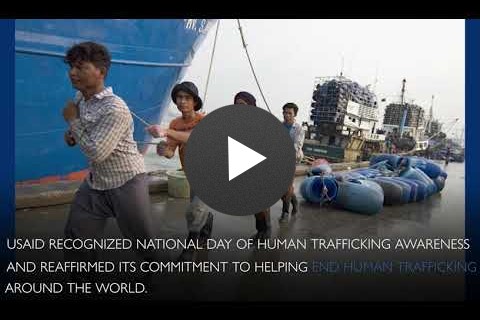
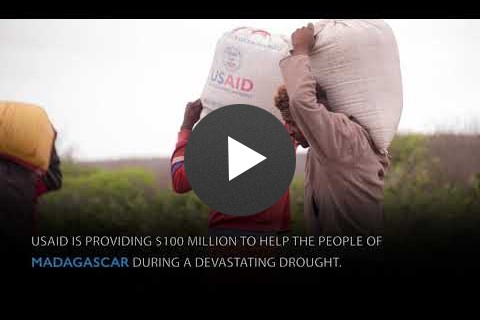
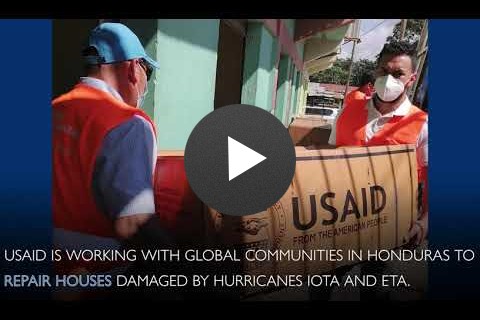
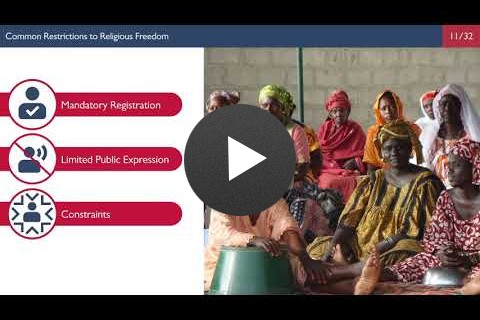
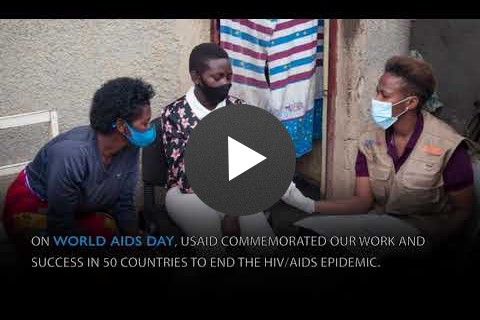

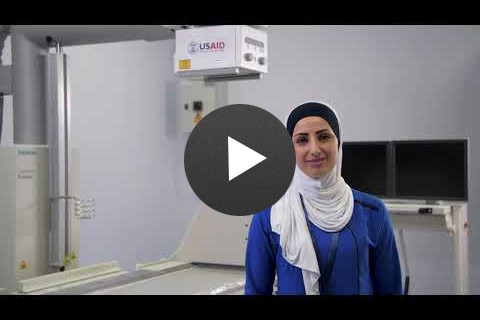

Comment
Make a general inquiry or suggest an improvement.